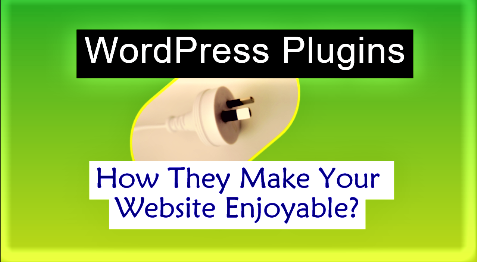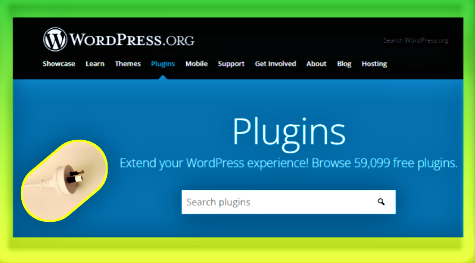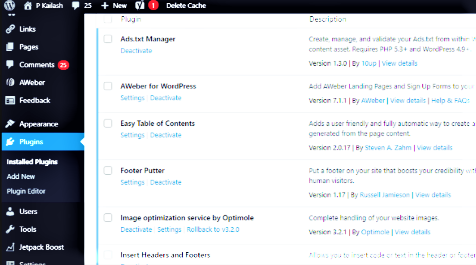If you are installing a plugin on your WordPress site, you already know what you want to achieve by doing so. In this update, I will address several concerns pertaining to the WordPress plugins.
The questions that arise into your mind about a WordPress plugin and their answers are as follows.
Page Contents ...
What Is A WordPress Plugin?
The plugin is a very small software. It derives its name from the fact that it can be “plugged into” the core software of WordPress to add certain features and functions to a website built on it. I have already explained how WordPress works to help you make your website in a previous update.

The developers have made the WordPress software flexible so that it can accept integration of small software that can add desired features and functions to a website. These small software are the plugins.
The plugins are crucial elements for building great websites on WordPress platform. They provide you the ability to extend your WordPress experience when you add them to the core WordPress software to include the features and functions to your website.
The wordpress.org plugin directory is the biggest and most common source of plugins. However, there are other sources you and download the plugins from.

- As on the day I am writing this update, there are more than 59,000 plugins available on the wordpress.org plugin directory. They are available for free. That means you can download and install any of these plugins on your WordPress without paying any money to any one
- Thousands of plugins are available on third party websites like GitHub
- Individual developers sell premium WordPress plugins
The plugins provide very crucial functions and features to your WordPress site. There are plugins for almost any function and feature you may want to add to it. Some examples of the plugins are those for optimising your site for search engines. We call them the SEO plugins. Similarly, there are plugins for improving the site speed, creating online store adding contact forms and so on.
Limitations To Adding WordPress Plugins
There is a limitation for you to be able to add plugins to your blog or website. You can add plugins to your website only if you host it on your own server. By own server, I mean a server that you pay for to a service provider to host your website. The very common phrase that we use such website is the self hosted website.
However, if you own a wordpress.com website, you have very limited options to customise it. And hence, you can’t add any plugin of your choice to it. In fact, the wordpress.com offers preinstalled plugins to add features and functions to the websites running on it. An example of a preinstalled plugin on such sites is the one for social media sharing buttons.
WordPress started as a blogging platform in 2003. That means, it was then a tool that bloggers used to write and publish their blogs. With the passage of time, it evolved into a content management system, abbreviated as CMS. The WordPress plugins have played a significant role in this evolution.
How Do The WordPress Plugins Work?
Plugins are very small programs. The developers write these programs in PHP language. Also, the WordPress has been written into PHP language. Once you install and activate a plugin, it is ready to do the job for which you have installed it on your site.
Let me explain with an example how a plugins starts its job. Say, you have installed a plugin for displaying the webpages. In that case, as soon as your website visitor’s browser requests a page from your server, the WordPress checks if you have installed any plugin for displaying the page. Since you have done so, WordPress calls this plugin into action.
The check that WordPress performs as above is called a hook. The WordPress maintains a list of several hooks. These hooks launch the plugins whenever they are called into action.
Also, the WordPress uses template tag that asks the plugin to insert some content in the specific area of a page. A special code forms this tag.
All interactions between the WordPress and the plugins takes place behind the scenes. That means, you can’t notice this interaction.
What WordPress Plugins I have Installed On pkailash.com
Since the early days of creating my WordPress website pkailash.com, I installed and uninstalled several plugins. I did so sometimes just to learn how to search the plugin and learn about what those plugins are. Then I activated and deactivated them as per the need of my website.

The above screenshot shows the dashboard of my website. The plugins menu on the left side of the screen and the right side of WordPress dashboard menu shows some of the installed plugins on pkailash.com. I deleted all deactivated plugins for the sake of making the plugins’ menu clutter free. Also, there are several advantages of keeping as few plugins as possible to improve the performance of the site.
There is an important thing to remember about the plugins. And that is – a plugin is compatible with the certain versions of WordPress. That means it will not work on the WordPress versions it is not compatible with.
If the WordPress developers or the theme developers release the new version of their software, some plugins already installed on WordPress may not work satisfactorily.
In that case, the incompatible plugin should be deactivated and an updated version of the plugin should be installed as soon as it is available. Updating plugins in WordPress is surprisingly very easy.
I have written a separate post on the versions of WordPress. That answers the question – how can you find out the version of WordPress your website is running? You may go through it to lean more about the WordPress version before installing a plugin on it.



